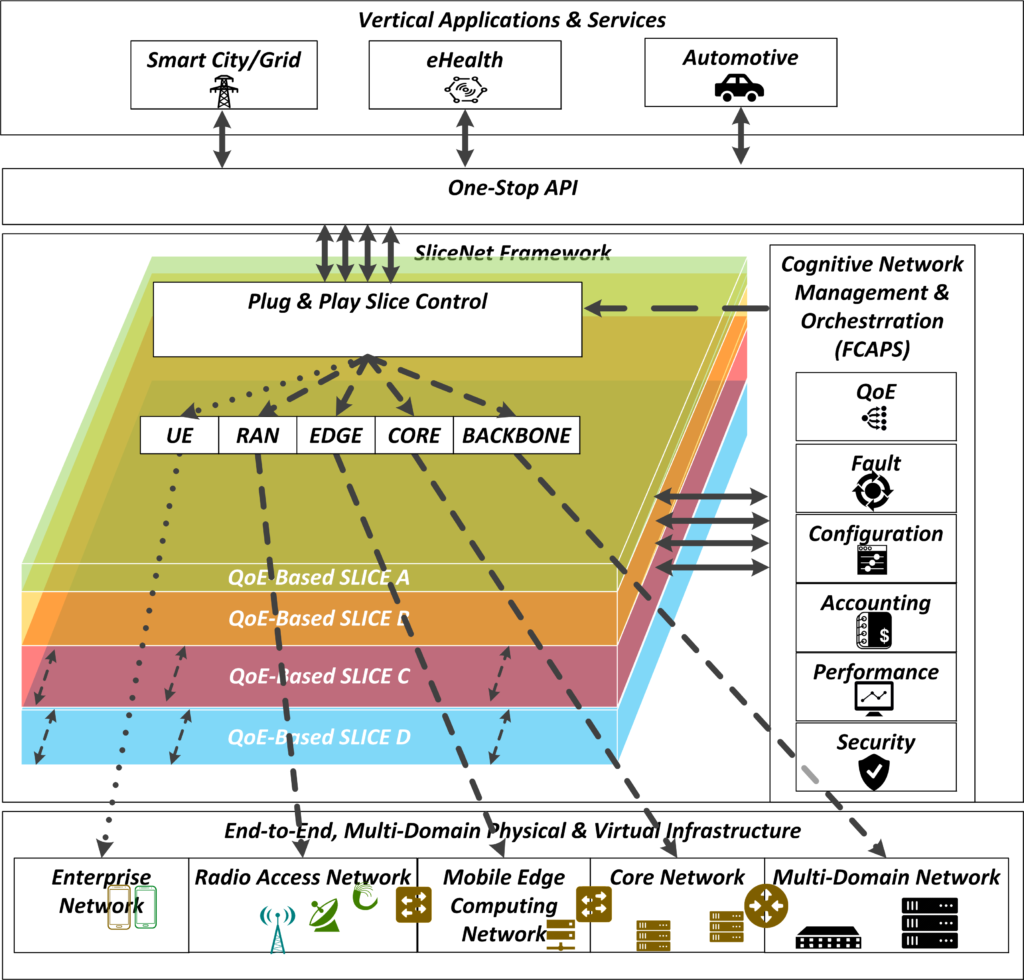
Network slicing is able to create a number of logically isolated networks, or “slices”, out of the same physical infrastructure shared by multiple tenants (5G operators), and thus can reduce the CAPEX significantly for these operators. OPEX can also be reduced thanks to the softwarisation and virtualisation technologies employed in network slicing. Furthermore, these network “slices”, can be customised and optimised to address the diverse Quality of Service (QoS) requirements from a wide and diverging range of potential use cases such as those found in the healthcare, utilities and Smart city sectors.
The SliceNet project will explore the programmability of the 5G infrastructure, in both the physical and virtual layers, in order to achieve the challenging end-to-end slicing across multiple domains. To do this, SliceNet will leverage 5G infrastructure to include not only the standard various network segments (RAN, Core etc.) but also the emerging MEC (Mobile Edge Computing) paradigm and notably the enterprise network segment for the vertical businesses. The MEC segment will boost the performance of the verticals’ use cases by pushing the cloud computing based capabilities closer to the end user, whilst integrating the enterprise network segment into the end-to-end infrastructure. This strategy will enable an innovative verticals-oriented slicing and slice management framework. Consequently, the benefits to verticals and other stakeholders include improved services and user experience, new business models, reduced time for service creation, reduced time to market, among others.
